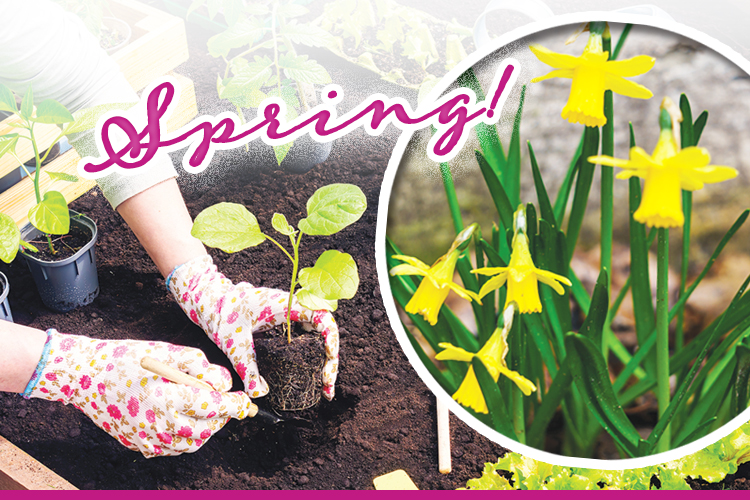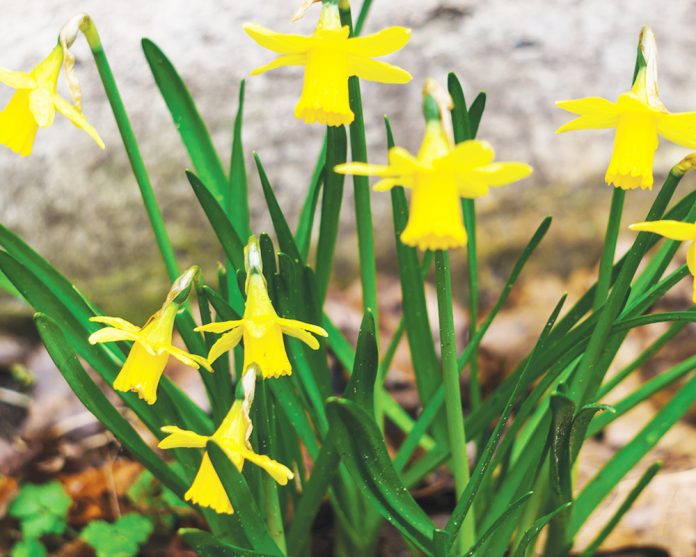
My eager daffodils began popping up in February, and now, finally, it’s time to start looking ahead to a wonderful growing season.
To get a jump on spring gardening, take a quick look around your yard. Snow, ice, and freezing temperatures all impact early-season growers and bloomers, as well as the structures that support your gardens. Check raised beds and/or fencing for signs of damage: holes chewed by curious creatures, borders offset by frost heave, fences moved or bent by the weight of snow.
Think about what you’d like to grow this year, and do a bit of research to answer two key questions.
- What do you hope to get from your garden? Flowers, edible plants/vegetables, a combination?
- Which plants grow best in the local environment? Your neighborhood nursery can offer a wealth of information about what might be the best options. Consider crops you haven’t planted before; rotating what is planted can help keep the soil from being depleted.
As soon as your beds are ready and the ground is workable, peas can be planted. Shortly after, broccoli and spinach can go in, just keep an eye on the weather. If a late frost warning is issued, cover sprouted plants with newspaper, black contractor bags, or other insulating material by nightfall to keep the frost off. Remove the coverings in the morning. Sun is essential, and daylight hours are still short in the early spring. All other plants should be held indoors until after the threat of frost has passed.
If you’re transplanting seedlings from your home or an indoor nursery, remember to harden them off before planting in the ground. Hardening off plants means slowly introducing them to the harsher (and colder) outside weather after they’ve spent time cozy indoors. This helps protect against shock, which can result in dead or damaged leaves, stunted growth, poor flower or fruit production, or even plant death. For details on how to harden off plants, check out my answer to a reader question from the February issue, www.etweekmedia.com/gardening-questions-asked-answered.
When transplanting from a non-biodegradable pot, tear or cut down the sides to peel the pot away, rather than trying to force the root ball up and out. Gently squeeze the root ball to encourage root separation and get some airflow prior to placing in the ground. If the starter pot is biodegradable, be sure the sides of the pot are loosened and the drainage holes are unclogged (leaving roots where they are is fine). The whole thing can be placed in the ground as a unit. Any pieces of the pot that fall off during planting can be put in the planting hole as added nutrients for the soil.
Be sure to thoroughly water plants immediately after planting. Try to work with Mother Nature to ensure plants, especially young ones, get a consistent amount of water, rather than flood/drought. Too much rain can cause the roots to grow shallow, leaving the plants with a substandard support system in the drier, hotter summer months. While not much can be done in cases of excessive rain, understanding your plants early growth environment can inform how much water will be needed during the latter part of the growing season.












 20 lucky winners will win $500 each in prizes totaling $10,000.
20 lucky winners will win $500 each in prizes totaling $10,000. 